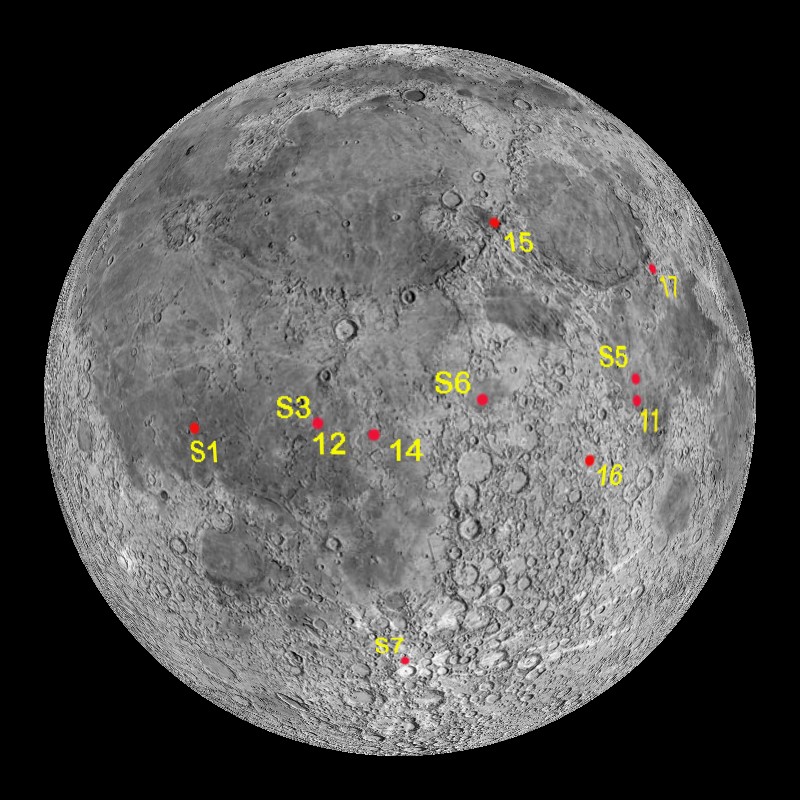Earth’s Moon
Description:
One theory on the creation of the moon is that a Mars-sized body crashed into the Earth and the material that broke in the collision formed the moon. The oldest material collected from the moon dates back to 4.5 billion years ago. This is believed to be the age of the moon. The moon rotates in such a way that the same side always faces the Earth. The side viewed from Earth is referred to as the near side, while the other side is the far side. Exploration of the moon has revealed that the near side of the moon is different than the far side of the moon. Temperature ranges from -387°F to 253°F on the moon depending on the side of the moon the temperature is taken from and whether it is night or day.
The near side of the moon has light spots referred to as Lunar Highlands and dark spots called Maria. The maria are lower in altitude than the highlands and filled with dark solidified lava from when the moon was volcanically active. Both areas are littered with craters, as the Moon’s surface is very old and has had time to accumulate craters. While the far side of the moon is also covered with craters, there are no maria present. More than 70 spacecraft have gone to the Moon and 12 astronauts have actually had the chance to walk on the surface of the Moon. Throughout the missions, 842 pounds of lunar rock and soil have been brought back to Earth. A second dataset of the moon shows the locations of Apollo and Surveyor landing sites. The Surveyor landing sites are noted with an "S." There are also pictures taken from the Apollo 8, 11, 12, and 17 missions.
Notable Features: Moon
- Maria: Areas of lower altitude filled in with dark solidified lava
- Lunar Highland: Areas of higher altitude that appear lighter
- Abundance of craters
- Absence of Marias on far side of the Moon
Notable Features: Landings
- Surveyor landings are noted by "S": S1, S3, S5, S6, S7
- Apollo landings are noted by number: 11, 12, 14, 15, 16, 17
- All noted landings are on the near side of the moon
Data Category
Major: Astronomy
Minor: Earth
Keywords:
Solar System, moon, landings
| Data Set Name | Earth's Moon |
| Data Set Directory Name | moon/original |
| Data Set Source | Clementine Spacecraft Image details |
| Data Set Developer | Jens Meyer |
| Visualization Developer | Steve Albers, NOAA/GSD |
| Audio | No |
| Download | FTP |
| Data Set Name | Moon with Apollo and Surveyor Landing Sites and Pictures |
| Data Set Directory Name | moon/landings |
| Data Set Source | Clementine Spacecraft |
| Data Set Developer | NASA Goddard Space Flight Center |
| Visualization Developer | NASA Goddard Space Flight Center |
| Audio | No |
| Contact | NASA Goddard Space Flight Center |
| Download | FTP |


 Earth's Moon (6 mb)
Earth's Moon (6 mb) Moon with Apollo and Surveyor Landing Sites and Pictures (21 mb)
Moon with Apollo and Surveyor Landing Sites and Pictures (21 mb)